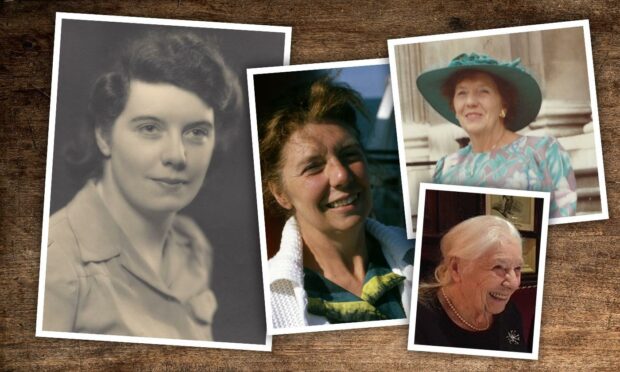Mary Gillbe, former principal of Aberdeen College of Domestic Science, has died aged 100.
She was instrumental in the design of the college’s new building at Kepplestone, which replaced the King Street premises.
Mary played an active part in the life of Aberdeen during the 1960s and instituted the first degree-level qualification in dietetics to the college, which was known as the Do School.
In later life, Mary became dean of the South Bank Polytechnic in London before spending part of her retirement in Nigeria.
Early years
Mary, née Davidson, was born to parents from Ayrshire in Irlam, a suburb of Manchester, in 1921.
She won a scholarship to Stretford High School for Girls and went on to study domestic science at the Elizabeth Gaskell College in Manchester.
Mary followed this with evening and weekend study at the University of Manchester, leading to a BA.
Marriage
In 1947, Mary married her first husband, Charles Gillbe, and had two sons with him while continuing to work as a lecturer and subsequently senior lecturer in her old college. Charles died in 1957.
Mary was offered an opportunity to study child psychology for a year at The Institute of Education in Cambridge which she completed in 1960.
In the same year she was appointed principal of the Domestic Science College in Aberdeen at the age of 39.
King Street
The college building was at 352 King Street, which has now become Mary Elmslie Court.
It had developed from a 19th century orphanage for girls that trained the inmates for a future as domestic servants.
The building had been built to a design by Archibald Simpson in the 1830s and was no longer fit for purpose.
Design
Mary was instrumental in the design of and the move to the building that replaced it at Kepplestone at the southwestern corner of the junction of Queens Road and South Anderson Drive.
She was a participant organiser in the meeting of the British Association for the Advancement of Science in 1962.
At the time of her tenure, the college was being integrated into Robert Gordon’s Institute of Technology.
Queen’s Road
During her years in Aberdeen, Mary owned an apartment at the impressive, Gothic-style mansion at 50 Queen’s Road, now Rubislaw House.
In 1971 Mary left Aberdeen to marry Peter Crowther whom she had met in Cambridge.
She spent a year as a housewife, found herself bored and returned to work, eventually becoming dean of the South Bank Polytechnic in London.
In 1981 she retired, then spent two decades living in Nigeria where Peter was working and started crewing for him when he sailed a dinghy when she was in her 70s.
Regret
In later life she read extensively and travelled widely.
Her son, son, Charles Gillbe, an Aberdeen graduate, said: “Her abiding regret was the diminution of the importance of domestic science in the school curriculum and the consequent loss of understanding of how to run a healthy and economic home.”
